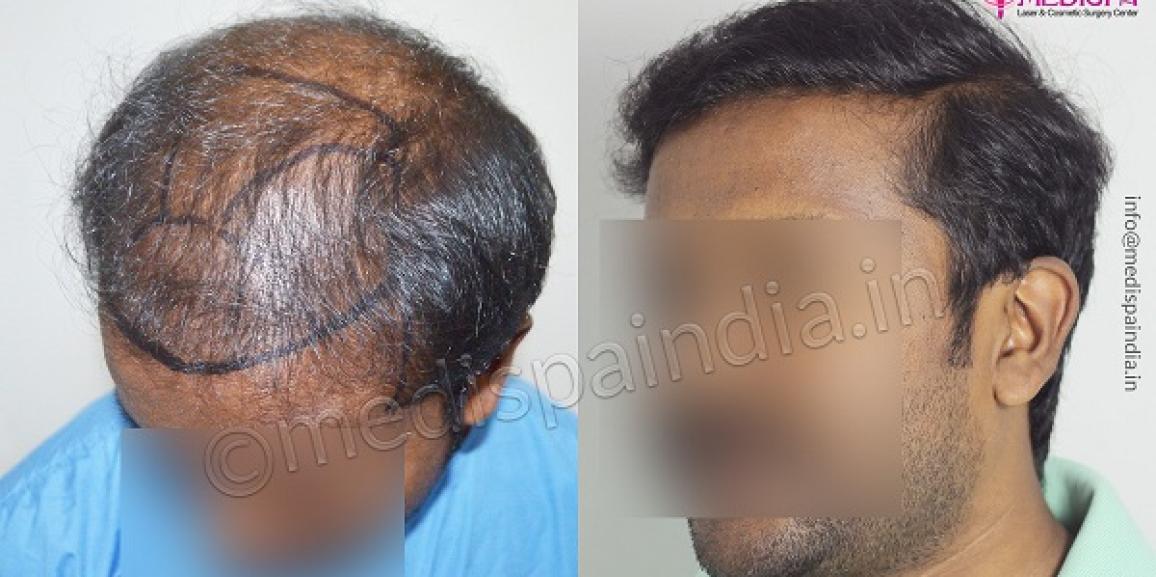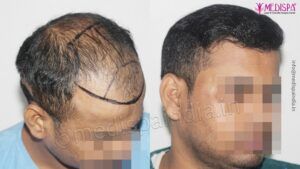
Hair follicles removed from the donor area during the hair transplant procedure are used to repair the bald area. The area that has permanent hair roots or DHT-resistant hair roots that are resistant to androgenic hormones because they lack the receptors for them is known as the donor region.
Due to the excellent quality of the procedure performed at a few number of hair transplant clinics nationwide, hair transplant in Jaipur has garnered a lot of attention. As a result of the rising demand for the procedure, the hair transplant industry in Jaipur has expanded. Only a few hair transplant centres have a big international patient base and are well-known among overseas patients.
The hair transplant cost in Jaipur is much too affordable, despite the high quality and high level of service offered globally. For hair transplant tourism, people go from all over the world to Jaipur because of the affordable prices and excellent outcomes.
At the Medispa Hair Transplant Clinic, we provide cost-effective hair transplant procedures with top-notch outcomes. All of our hair transplants are carried out by Dr. Suneet Soni, our top surgeon, who is recognised globally for his competence because we believe in perfection. He has a stellar reputation in the field of hair transplants, and every year, numerous surgeons benefit from his insights.
Hair transplant
A hair transplant is an outpatient cosmetic surgery technique designed to cover the bare scalp with the most hair density possible or to fix the hairline if you are unhappy with the natural hairline. The idea behind hair transplantation is to place the DHT-resistant hair follicles on the side and back of the head since they do not alter due to hereditary influences and remain stable for life.
A minimally invasive surgical treatment called a hair transplant involves moving hair follicles from a safe donor location to the bald area to restore hair. It requires trained and knowledgeable hands to complete because it is a very precise technique.
Different techniques for hair transplant
Two separate procedures are used to accomplish hair transplants, and they may be identified by how the grafts are harvested:
- Strip procedure for FUT hair transplants: With the strip procedure, the donor region is prepared by removing a thin strip, which is then dissected to reveal each individual graft. The recipient location is subsequently treated with these individual grafts. This method is mostly used in situations of severe baldness when 3000–3500 grafts are needed.
- FUE hair transplant method: Using a punch instrument, individual hair follicles are extracted from the donor location and then directly transplanted at the recipient site. Since the extraction is based on assumptions, each step should be carried out under magnification and with utmost caution as this procedure is more likely to harm hair follicles. This method is mostly employed in situations of initial baldness and facial hair transplantation for the beard, moustache, and brows. The method allows for a maximum of 2000–2500 hair transplants to be harvested.
- FUT and FUE combined technique: This technique was developed in response to the current need for widespread baldness cases and high density hair transplants. More than 4000 hair transplants may be harvested with this procedure. This procedure is carried out by first using the FUT technique to harvest the bulk of the grafts, which amounts to 3000–3500 hair grafts, and then using the FUE technique to remove the remaining grafts, which amounts to 1500 grafts. This method offers future sittings up to three times, which is advantageous for long-term benefits.
Dr. Suneet Soni is a specialist in using this method and is the one who first launched the bio improved combo of FUT and FUE in Delhi and Jaipur.
Importance of various techniques for hair transplant
FUT hair transplant’s importance
The benefits of FUT hair transplantation include:
- The ability to gather more hair grafts—roughly 3000–3500—than other methods. The method is suitable for balding cases with a significant balding area as a consequence.
- Those who don’t want to shave their heads prior to a hair transplant should consider it.
- This treatment permits many sittings since the hair transplants are retained.
- This process minimises excessive harvesting and harms hair grafts the least since it dissects individual hair transplants at high magnification.
The FUE hair transplant process
This hair transplant process enables the extraction of fewer hair grafts—roughly 2000–2500—than other methods. As a consequence, it could be a better choice for those who are just starting to bald and for those who want to transplant their eyebrows, beard, or moustache. This method also yields results with an almost imperceptible donor region scar, which was previously an advantage. The FUT process, however, now yields results with almost unnoticeable scarring in the donor area.
The importance of combining FUT and FUE techniques
- 1. When FUT and FUE alone are unable to deliver enough hair grafts, this process enables the harvesting of a greater number of hair grafts.
- This method enables hair grafts to be stored for subsequent sessions despite the fact that more hair grafts are taken.
- This technique makes it possible to combine several single and multiple hair transplants, producing a fuller, more realistic-looking hairline.4. This technique maximises hair density in the bald area while minimising harm to hair follicles.







